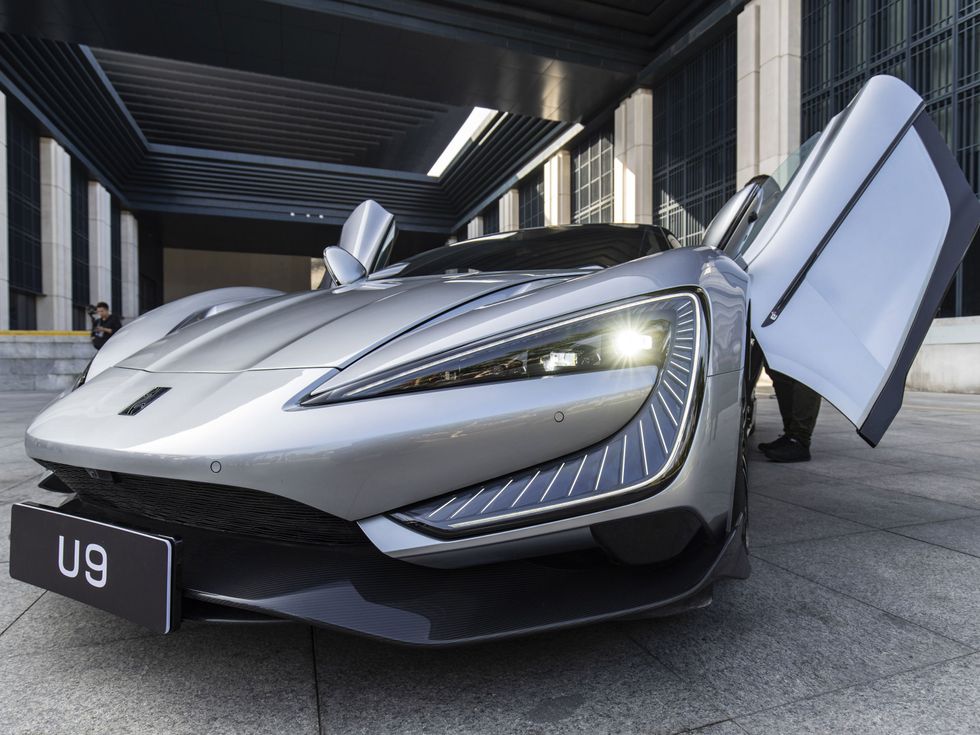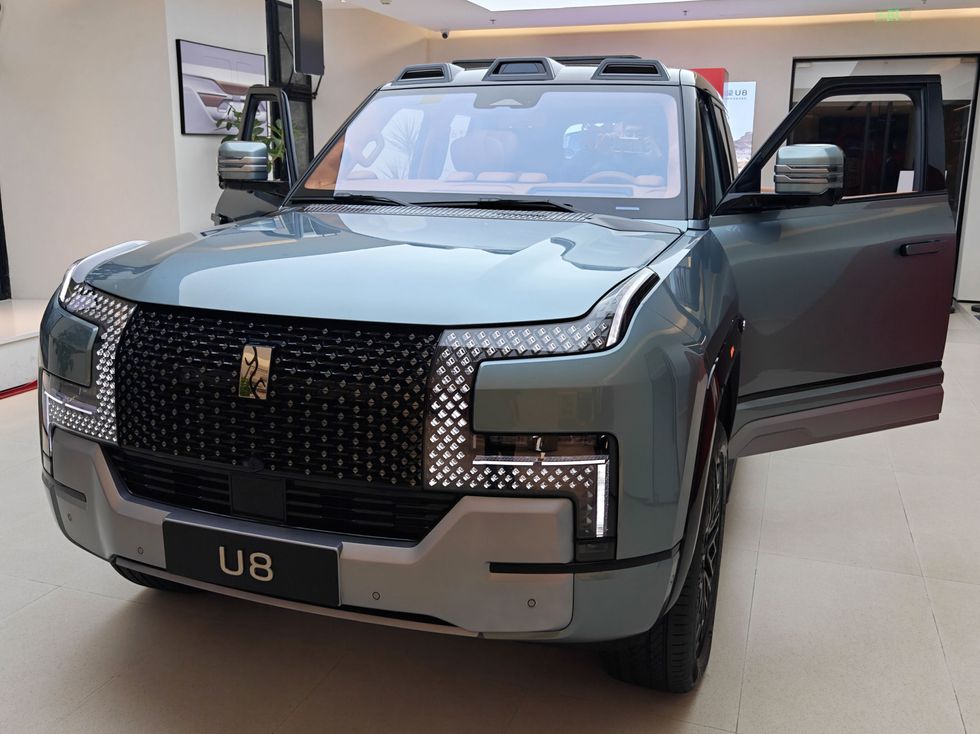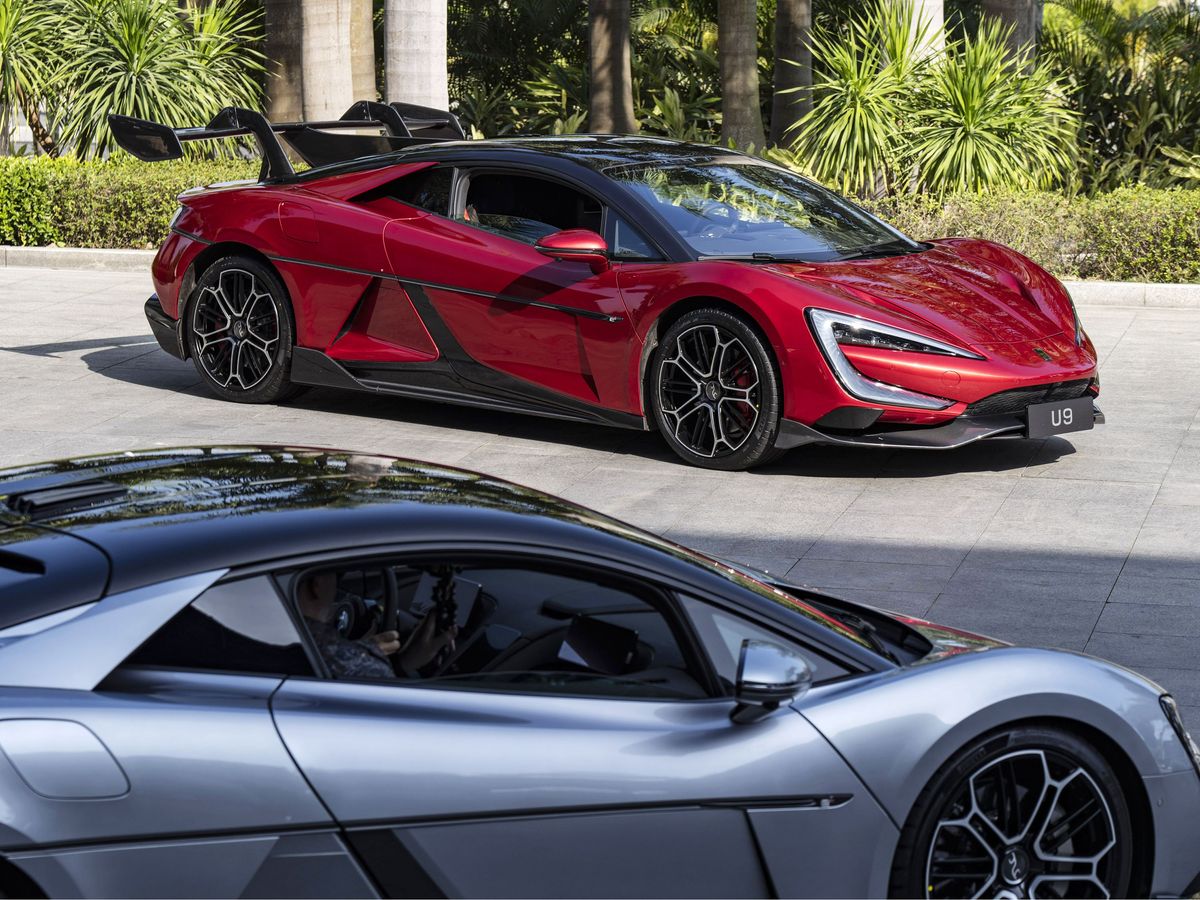“Hit ’em low, hit ’em high” is an old football catchphrase. It also describes the two-pronged strategy BYD has adopted to take the automotive world by storm—and potentially blow legacy carmakers out of the water.
In a single week in February, the fast-rising Chinese automaker debuted a US $236,000 “dancing” electric supercar and an $11,000 plug-in hybrid. The two cars couldn’t be more different on the surface, but they are linked by BYD’s technical prowess in batteries and its ability to develop and crank out new cells at scale, all at low cost.
Consider the automaking giant General Motors, which is struggling mightily to get its Ultium nickel cobalt manganese (NCM) batteries and EVs out the factory door. In contrast, BYD was founded in 1995 by Chinese chemist Wang Chuanfu as a humble maker of nickel cadmium cells for phones, with zero automotive experience. Yet BYD is turning that apparent disadvantage into a potentially game-changing edge today. The Warren Buffett–backed Chinese automaker sold more electrified vehicles in 2023 than any global automaker, moving 1.6 million EVs and another 1.4 million hybrids. (Tesla still boasted more sales of pure EVs, at more than 1.8 million.)
And where every other electric sports car, supercar, or hypercar relies on high-nickel NCM batteries in some form, the 947-kilowatt (1,287-horsepower) Yangwang U9 will rely on the same lithium-iron phosphate “Blade” cells that power other BYD models. Those LFP cells, built by BYD’s FinDreams division, have attracted global customers of Tesla, Ford, and Hyundai; others are drawn to the cells’ thermal stability and affordable chemistry, which requires neither pricey cobalt nor the ethical baggage of mining in central Africa.
Ironically, Chinese companies like BYD and Contemporary Amperex Technology Co., Limited (CATL) may be dominating the LFP market and supply chain. But the technology itself traces to the University of Texas and the late Nobel laureate John Goodenough, who helped pioneer what is today the hottest chemistry in EVs.
Thanks in part to its modestly scaled, money-saving 80-kilowatt-hour LFP pack, BYD’s U9 supercar touts a $236,000 starting price (for the Chinese market only) that might make Ferrari blush, let alone Croatia’s Bugatti Rimac and its $2.2 million Rimac Nevera hypercar. The price apparently saves money for more ambitious technology: The scissor-doored supercar integrates an active body-control system that recalls modified Chevy Impalas and other low-riders of yore. The U9’s Disus X system integrates active dampers, air springs, and hydraulics to control body motions along multiple axes, building a foundation for both high-performance handling and future advanced driver assistance systems (ADAS). But the disco-party trick is a set of four “dance mode songs” that lets the car bob, bounce, and weave, or drive on three wheels. The Beach Boys’ “Little Deuce Coupe” never seemed so quaint.

BYD claims the U9 will reach a 309-kilometer-per-hour top speed (192 miles per hour), and blitz 100 kph in less than 2.4 seconds. The gasoline-powered McLaren 750S I just drove on track and in the Mojave Desert in Nevada does it in 2.3 seconds and peaks at 206 mph, but it costs about $331,000 to start. BYD further pegs the U9’s driving range at 465 kilometers (289 miles), with the ability to charge at up to 500 kW, which would theoretically fill its lithium-iron phosphate pack from 30 to 80 percent in 10 minutes. (With the most powerful public chargers operating closer to 300 kW, that claim would hinge on a next generation of ultrafast chargers.)
The U9 comes on the heels of the another ambitious BYD model, the roughly $150,000 Yangwang U8. This 833-kW (1,200-hp) electric SUV can purportedly float on water for up to 30 minutes in an emergency, and churn through the drink at nearly 3 kph to make its escape.
Even Chinese companies can’t escape a global price war that has automakers scrambling for cost savings in batteries, motors, and manufacturing. Taking a page from Tesla, BYD is leveraging its battery and manufacturing expertise to put the heat on competitors. BYD rolled out a new version of its plug-in hybrid Qin Plus DM-i, priced 20 percent below the previous model. Priced from 79,800 yuan in China (US $11,100), the latest Qin Plus will undercut the price of popular gasoline-powered models such as Toyota’s Corolla. The plug-in hybrid can range for 55 km on its battery alone before switching to gasoline propulsion.
“The price will make petrol car assemblers tremble,” BYD vowed in a statement.

BYD launched its subcompact Seagull in China in April 2023, and sold a stunning 200,000 of them by year’s end. The hatchback sells for the U.S. equivalent of about $11,500, cutting costs through extreme vertical integration and LFP batteries. The Seagull has only about 75 horsepower, and wasn’t designed to meet U.S. crash standards, but it can range for about 402 km (250 miles) on a charge, for less than half the price of any EV sold in America.
If that’s not enough, BYD recently broke ground on its first factory for sodium-ion cells, a $1.4 billion facility with a planned annual capacity of 30 gigawatt-hours. Like LFP before it, sodium-ion cells were viewed with disdain not long ago. That’s changed, quickly. The abundant alkaline metal sells for less than 5 percent of the price of lithium, though the lack of a supply chain and manufacturing scale still present challenges. Sodium-ion batteries can’t match the energy density of lithium-ion, and both life-cycle and cold-weather operation were historically poor, but Chinese companies say that’s all improving. Pluses include outstanding thermal stability and safety, and the elimination of toxic and expensive lithium, cobalt, copper, or nickel.
Analysts thought BYD might introduce the first sodium-ion battery on the aforementioned Seagull. But in late December, the JAC Group’s Yiwei, partly owned by Volkswagen, began rolling off an assembly line, powered by sodium-based cathodes in its battery pack. CATL, a BYD competitor and the world’s largest battery producer, says it has developed a way to combine sodium- and lithium-ion cells in a single pack, taking advantage of both lithium’s superior energy density and the affordability and cold-weather performance of sodium.
For all its potential advantages, BYD hasn’t made it to the United States yet, stymied in part by a steep 25 percent tariff on Chinese cars first enacted by the Trump administration. As reported by The New York Times, President Biden piled national security concerns atop existing trade barriers on 29 February 2024. The administration is moving to block Web-connected Chinese cars from the U.S. market, citing potential national risks from spyware that could track cars and drivers and send sensitive data to Beijing. The Times quoted Biden’s statement saying, “China is determined to dominate the future of the auto market, including by using unfair practices. China’s policies could flood our markets with its vehicles, posing risks to our national security. I’m not going to let that happen on my watch.”
Prior to Biden’s announcement, BYD’s top North American executive insisted the company had no plans to send cars to the United States, even as it studies the feasibility of opening a factory in Mexico. But BYD has gained a foothold in Australia and a beachhead in European markets that has raised concerns among European governments and potential rivals. BYD has also found a trickle of sales in Brazil and Mexico. And with the China-built, roughly $35,000 Volvo EX30 about to go on sale here—I drove it in Spain for IEEE Spectrum back in November—most analysts and automakers believe it’s a matter of time before a wave of Chinese cars arrives in the United States. The worry is that these cars will overwhelm rivals with appealing tech at bargain prices, driven by low-cost labor, that even Tesla can’t match. Elon Musk himself has sounded alarms and called for strict trade barriers against Chinese cars. But for U.S. automakers—including the profitable Tesla as well as Ford and GM, which have yet to crack the money-making code on EVs—it may be time to stop pointing fingers and start competing.
- The Best Tech of CES 2023 - IEEE Spectrum ›
- The Top 10 EV Battery Makers ›
- BYD Owner Is China's Richest Man - IEEE Spectrum ›
Lawrence Ulrich is an award-winning auto writer and former chief auto critic at The New York Times and The Detroit Free Press.



